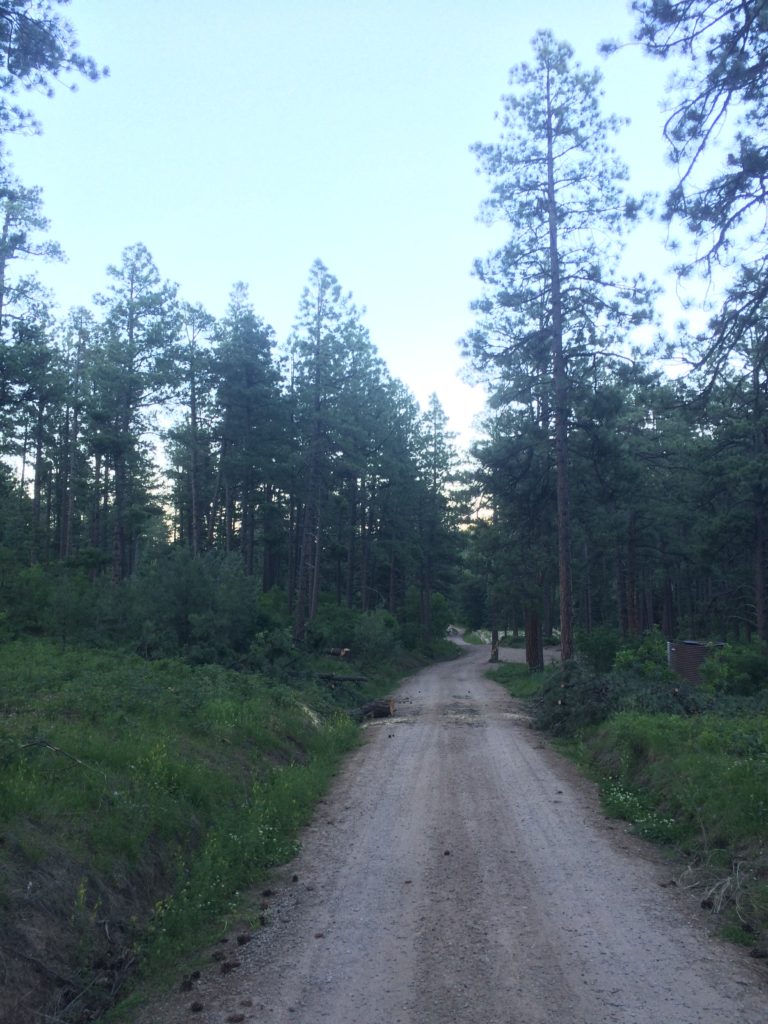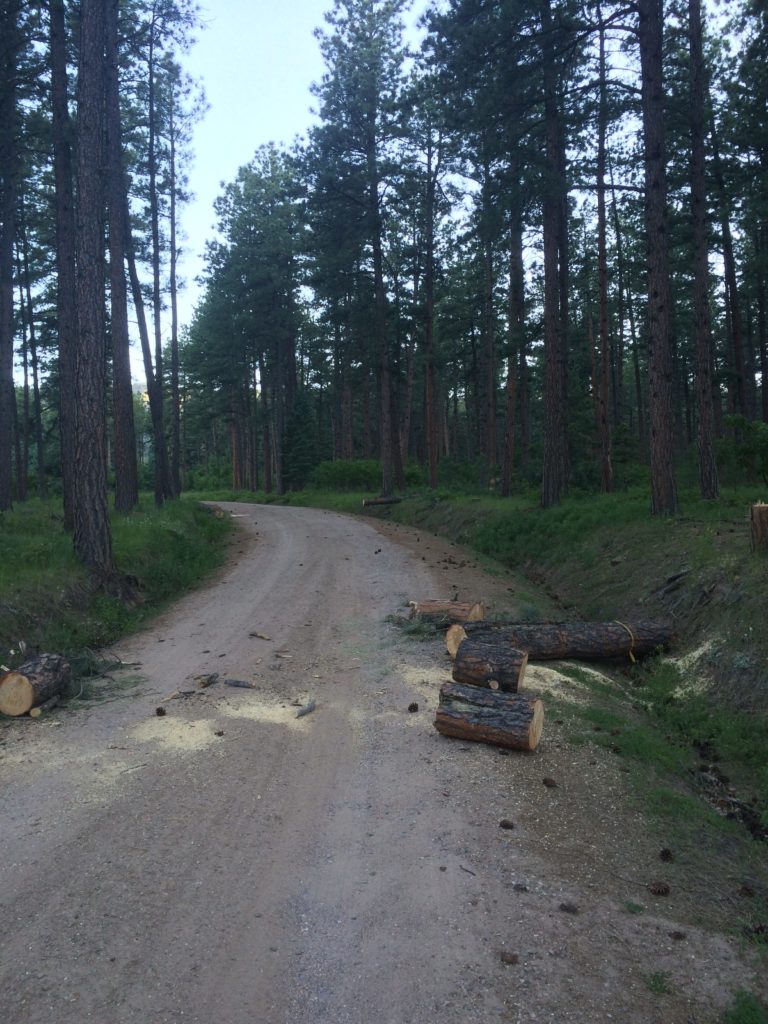If you were standing in the forest that is now Pueblo Mountain Park 200 years ago, chances are you’d be in a place that had recently burned. Historically, ponderosa pine forests experienced a cool ground fire, usually started by lightning, every 5-10 years. It was a “cool” fire because it pretty much stayed on the ground burning grasses, forbs and shrubs, including most young ponderosa pines. The thick bark of the mature ponderosa pines could handle the scorching, and the lack of lower branches prevented the fire from working its way up into the canopy. Fire was the tool that Nature used to keep ponderosa pine forests open with relatively few trees and lots of grasses.
 When settlers arrived in the West, they brought with them a European approach to managing forests, which lacked an understanding of the important role that fire played in many forest types. Anytime lightning would ignite a fire, every effort was made to to put it out. Over time, this approach led to ponderosa forests becoming wildly overgrown, and the combination of more shade from more trees and, often times, livestock grazing, the grasses that would carry a fire across the forest floor disappeared. In their place grew more and more trees and shrubs, which meant more and more fuel for catastrophic fires that burn up through the forest canopy and everything else in their path. Pueblo Mountain Park was a good example of such a forest.
When settlers arrived in the West, they brought with them a European approach to managing forests, which lacked an understanding of the important role that fire played in many forest types. Anytime lightning would ignite a fire, every effort was made to to put it out. Over time, this approach led to ponderosa forests becoming wildly overgrown, and the combination of more shade from more trees and, often times, livestock grazing, the grasses that would carry a fire across the forest floor disappeared. In their place grew more and more trees and shrubs, which meant more and more fuel for catastrophic fires that burn up through the forest canopy and everything else in their path. Pueblo Mountain Park was a good example of such a forest.
 Over the past 15 years, many efforts have been made to return the park’s forests to a more natural condition – less trees, less understory that could bring a ground fire into the canopy, and more grasses. Much progress has been made, as a good portion of the eastern third of the park now more closely resembles what a healthy ponderosa forest should look like.
Over the past 15 years, many efforts have been made to return the park’s forests to a more natural condition – less trees, less understory that could bring a ground fire into the canopy, and more grasses. Much progress has been made, as a good portion of the eastern third of the park now more closely resembles what a healthy ponderosa forest should look like.
If you’ve been wondering what the recent tree cutting is all about, it is our next step in reducing the park’s vulnerability to a catastrophic fire. All of the current tree cutting is taking place directly along the park roads. A road, lacking fuel, is a fire break that could effectively stop a fire moving along the forest floor. Our current efforts are meant to bring the potential of breaking the path of a fire into the upper part of the forest by opening up a gap in the tree canopy. If a fire were moving through the crowns of the trees, the gap we are currently enhancing stands a better chance of stopping it. It also gives firefighters a good place to “take a stand” in the case of a fire moving through the park.
 As an added benefit, the removal of these trees will increase the amount of snow that reaches the park roads, which we close off in the winter, which will make for better snowshoeing and cross-country skiing. And, the wood we get from the trees will be burned in the Horseshoe Lodge’s biomass boilers to heat the lodge, saving the burning of thousands of gallons of fossil fuels.
As an added benefit, the removal of these trees will increase the amount of snow that reaches the park roads, which we close off in the winter, which will make for better snowshoeing and cross-country skiing. And, the wood we get from the trees will be burned in the Horseshoe Lodge’s biomass boilers to heat the lodge, saving the burning of thousands of gallons of fossil fuels.

So, please excuse the temporary mess – we will soon be removing the remaining branches as we’ve arranged to have use of the City of Pueblo’s huge chipper in July. When this project is done, we all will have a safer, healthier and better Pueblo Mountain Park.
